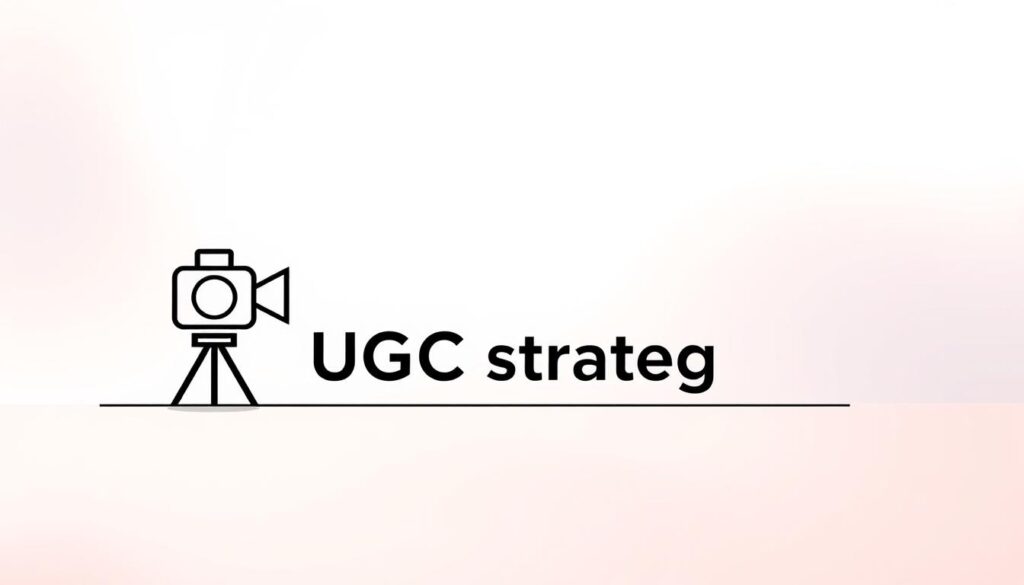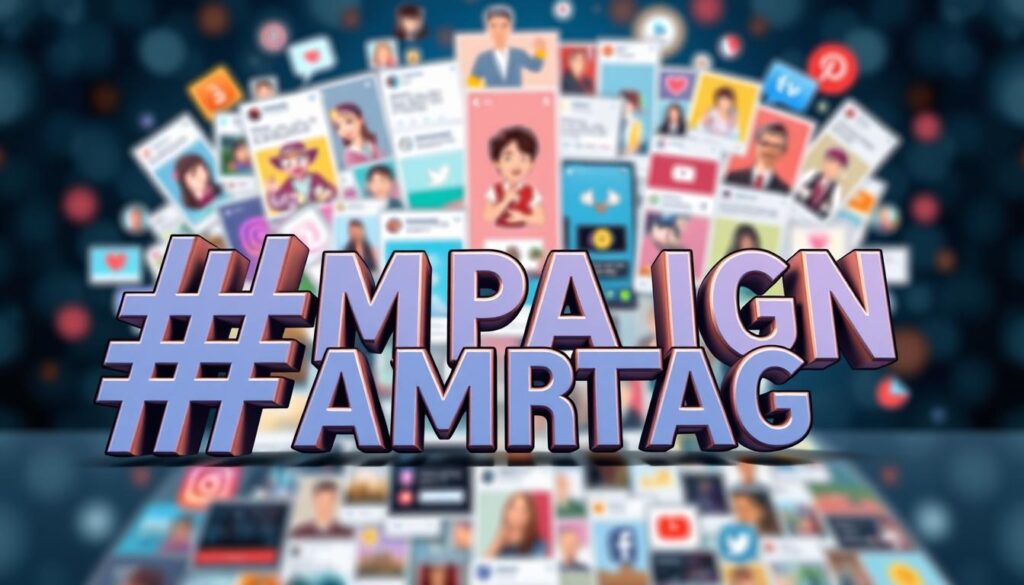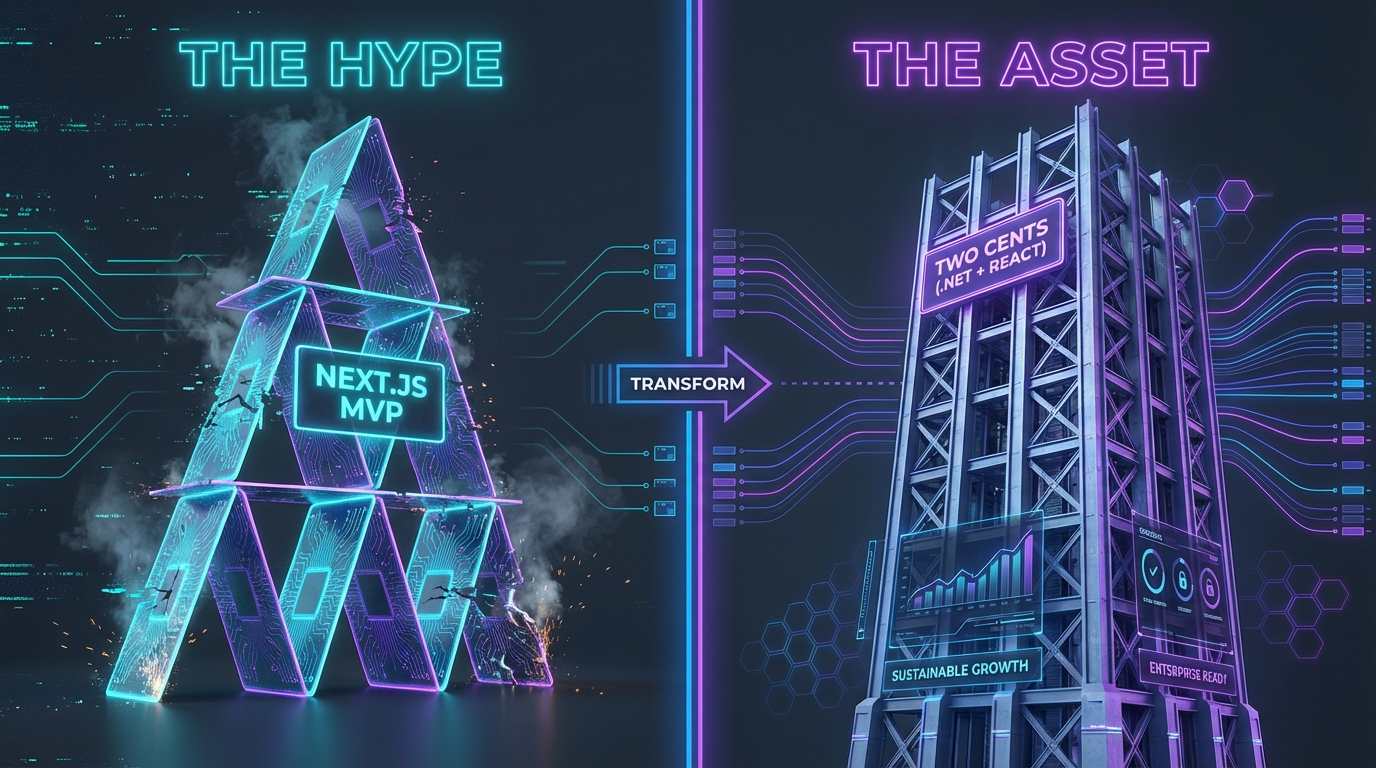Quick Summary: User-Generated Content (UGC) is the authentic media created by your users—customers, employees, or creators—rather than your brand. It is a cornerstone of modern visual commerce. To succeed in 2025, brands must distinguish between the UGC creator vs influencer models, master UGC rights management, and leverage advanced tactics like TikTok Spark Ads and whitelisting ads to scale social proof across the funnel.
By March 2024, three customer-shot GoPro videos had more than 400 million YouTube views. That single stat shows how real posts from your audience can scale reach fast.
When everyday consumers post images, videos, reviews, or testimonials, your brand gains authentic proof that drives trust. Smart brands like GoPro, lululemon, and LaCroix tap this material to lift awareness and conversions without big ad spends.
In this guide, we show you a simple strategy to find, brief, and activate these customer-created posts across social media channels. You’ll learn where this fits in your marketing funnel and which metrics matter.
We’ll keep it practical. Expect clear steps for Instagram, TikTok, YouTube, Shorts, X, and blogs, plus legal and permission basics so your company stays safe while scaling real engagement.
Key Takeaways
- Authentic posts can drive huge reach and trust faster than paid ads.
- Map this approach to awareness, engagement, conversions, and community.
- Use platform-specific tactics for Instagram, TikTok, YouTube, Shorts, and X.
- Keep legal, credit, and permissions simple to protect your brand.
- Measure impact with clear metrics and iterate for steady growth.
What Is User-Generated Content and Why It Matters Now
Real posts from customers—like reviews, photos, and short videos—act as modern word-of-mouth that moves shoppers to click and buy. This type of material is unpaid and created by real users, not your paid ads or polished campaigns.
Defining the formats
UGC includes reviews, photos, videos, blog mentions, testimonials, and even podcasts. Organic pieces come from customers, loyal fans, and internal teams sharing employee-generated content (EGC). Paid UGC comes from creators you hire or license.
How it differs from influencers and paid creators
- Influencers bring an audience and personal brand persona.
- Paid creators produce specific assets you can reuse and control more tightly.
- Both organic and paid approaches can feel authentic when disclosures are clear.
| Type | Typical Source | Cost & Control | Best Platforms |
|---|---|---|---|
| Organic UGC | Customers, employees | No cost, low control | Retail reviews, Instagram Reels, TikTok |
| Paid UGC | Creators, freelancers | Paid, higher control | YouTube Shorts, Reels, ad assets |
| Influencer | Public personalities | Paid or traded, persona-driven | Instagram, TikTok, X threads |
Start small: resharing existing reviews and photos with permission builds trust quickly and fuels broader activation across platforms.
Types of UGC: Organic vs. Paid and When to Use Each

Choosing the right mix of organic and paid assets helps you hit clear goals. Below we break down sources, where to find them, and how to match formats to outcomes.
Organic from customers, employees, and loyalists
Customers post reviews, photos, and short videos that build trust at low cost. Employees add authentic behind-the-scenes posts known as employee-generated content (EGC), which humanize the brand. Brand loyalists create repeat posts that strengthen community.
Surface these via hashtags, tags, and social listening. Ask for permission, then credit and repost to amplify reach.
Paid creators vs. influencers
Understanding the UGC creator vs influencer distinction is vital for budget allocation. Paid UGC creators deliver usable assets you license to the brand, often without posting to their own feeds. You find them on marketplaces and creator platforms.
Influencers, by contrast, trade on audience and persona. They post to their followers and boost reach, but give less control over final assets.
Match formats to goals
- Awareness: unboxings and product hauls.
- Consideration: testimonials and reviews.
- Conversion: close-up demos and before/after photos.
Test angles like day-in-the-life videos or “why I switched” posts. Keep briefs, checklists, and disclosure steps in each campaign. Over time, build a creator bench that complements your organic advocates and tightens your strategy.
The Business Case: Authenticity, Social Proof, and Brand Loyalty

Authentic posts from real customers shorten the path from interest to checkout by proving your product works in the wild. They give shoppers quick signals that reduce risk and lift consideration.
Trust and social proof that drives consideration and purchase intent
Social proof converts uncertainty into action. When consumers see honest reviews and photos, they trust the brand more than they trust polished ads.
“People trust peers. A verified customer photo or review often beats crafted messaging when shoppers are undecided.”
This trust raises purchase intent and improves conversion rates on product pages and in email campaigns.
Community, engagement, and brand ambassadors that boost loyalty
Two-way engagement builds a community that shares and defends your brand. Recognition, simple credits, and reposts turn repeat buyers into brand ambassadors.
Those ambassadors create ongoing momentum that keeps awareness rising without large media buys.
Cost-effectiveness compared to traditional marketing campaigns
Using customer assets cuts production costs and extends creative life across emails, landing pages, and checkout flows. This reduces spend per impression versus headline ad buys.
| Business Benefit | What It Does | Practical Result |
|---|---|---|
| Social proof | Reduces perceived risk | Higher consideration and CTR on product pages |
| Community engagement | Builds brand ambassadors | Repeat purchases and organic awareness |
| Cost savings | Reuses customer assets | Lower production spend, longer asset life |
| On-site UX | Real visuals on product + checkout | Improved conversions and fewer returns |
Practical note: keep a steady resharing cadence, budget for rights and moderation, and use these assets to complement paid campaigns—not replace them. That balanced approach gives your company trust, reach, and measurable ROI.
User-Generated Content Across the Buyer’s Journey
Simple clips and photos from real users can lift awareness, answer questions, and close sales when placed in the right spot.
Top-of-funnel: awareness on social channels and media platforms
Use short-form video and Reels to spark discovery on TikTok, Instagram, and YouTube. Quick hooks like unboxings or first impressions build fast brand recognition.
Aim posts at broad audiences and test hooks that bring people to your site. Track which formats and platforms drive the most clicks.
Mid-funnel: consideration with customer content on landing pages
Place testimonials, review snippets, and how-to clips on landing pages. These snippets act as proof and reduce friction for shoppers.
Example: Edloe Finch adds customer photos on product pages to ease buying anxiety for furniture.
Bottom-funnel: conversions with UGC on product and checkout pages
Add UGC carousels and close-up demo clips near CTAs and buy boxes. This shows real products in use and nudges people to finish checkout.
- Add trust badges and creator quotes on checkout pages to cut cart abandonment.
- Tag and track placements by funnel stage for clearer attribution.
- Build a categorized library so your team can plug assets into each step quickly.
Quick tip: continually refresh your top performers. That keeps media ROI steady and strengthens your overall marketing mix.
Building a UGC Strategy: Goals, Audience, and Channel Mix

Begin with a single objective so your campaign, channels, and briefs all point to the same result. When you name the goal—awareness, engagement, conversions, or community growth—you can map KPIs and pick the right media.
Set measurable goals. Tie impressions to awareness, ER to engagement, CTR to traffic, and conversions to sales. Track these in dashboards and social listening tools.
Choose channels by audience fit. Match Instagram and TikTok for short reels, YouTube for longer demos, and X for quick announcement threads. Prioritize the social media channels where your audience already spends time.
Brief your contributors clearly. Tell people the format, length, permitted usage, and the hashtag to use. Offer submission paths like DM, a form, or a pinned email in your bio.
Put governance in place. Create an approval workflow with legal checks, moderation rules, and brand-safety guidelines. Build a taxonomy so assets route to landing pages, ads, and emails fast.
- Provide prompts (why they bought, tips, before/after).
- Offer ethical incentives and always request permission with credits.
- Document your ugc strategy so teams can replicate it across campaigns.
Finding and Curating UGC with Social Listening

By scanning hashtags and mentions, you can spot the genuine posts that resonate with real shoppers. Social listening turns scattered posts into a steady pipeline of usable assets for campaigns and product pages.
Keywords, hashtags, and topic queries to surface relevant posts
Set up queries for branded hashtags, product names, and common search terms. Track variations and misspellings so you don’t miss fresh posts.
Tip: include platform-specific tags and slang to catch niche conversations on different platforms.
Signals of quality UGC: authenticity, traction, and brand fit
Look for natural language, real-life usage, and minimal staging. Prioritize posts with saves, comments, and shares—those traction markers show resonance.
Validate each post for accuracy and narrative fit before reposting. Build a shortlist of repeat performers to form a reliable creator bench.
Turning insights into campaigns: trend discovery and content opportunities
Turn trends into quick prompts or themed campaigns. Use listening to measure contest reach and sentiment, and to track campaign hashtags in real time.
Engage quickly through DM to request rights, then tag and archive assets with metadata for fast retrieval across channels.
| Signal | What to do | Why it matters |
|---|---|---|
| Branded hashtag spike | Create a rapid-response prompt | Rides momentum and boosts participation |
| High saves/shares | Prioritize for landing pages | Proven resonance reduces friction |
| Natural, unstaged posts | Request permission and higher-res files | Authenticity increases trust |
Quick process: check listening dashboards daily, tag promising posts, and convert insights into short campaigns that amplify what users already love.
Permission, Credit, and Legal Best Practices

A reliable rights process keeps your marketing safe and your relationships with creators strong. You should always ask for explicit consent before resharing any post. Do not assume a branded hashtag equals permission. Comprehensive UGC rights management protects you from copyright claims and builds long-term creator trust.
How to request consent and avoid copyright pitfalls
Send a standardized rights request that lists usage, duration, and platforms. Keep the message short and clear so creators can respond fast.
Record every yes. Store approvals and license terms in a central log for audits and future campaigns. If you pay for assets, add legal review before broad commercial use.
Attribution standards and cross-posting etiquette
Credit visibly: tag the creator in captions and on media when possible. Confirm handles across platforms to avoid misattribution.
- Avoid edits that change meaning or misrepresent the creator’s intent.
- Honor takedown requests immediately and update your asset library.
- Disclose sponsored or incentivized posts per FTC rules, and keep reviews accurate and unchanged.
| Action | How to do it | Why it matters |
|---|---|---|
| Request rights | Standard message with usage, duration, channels | Prevents copyright claims and preserves trust |
| Track consent | Central log with timestamps and license terms | Maintains compliance for campaigns and audits |
| Credit creators | Tag handles in captions and on media | Boosts goodwill and visibility for the creator |
| Legal review | Review paid or commercial uses before launch | Reduces legal risk for the company |
Practical rule: train your team to never post without documented permission. That single policy protects your brand, helps your marketing scale, and keeps trust with real users.
Platform-Specific Tactics to Spark and Scale UGC

Platform-specific tactics turn casual posts into measurable wins across social channels. Use simple plays per platform so your best assets get discovered and shared.
Instagram and TikTok: quick hooks and remixability
On Instagram and TikTok, define a memorable hashtag and pin it in your bio. Encourage Reels and Duets so users remix and discover your brand. You can then amplify high-performing organic videos using TikTok Spark Ads, which allows you to boost the creator’s original post directly while keeping their handle attached.
Use branded effects or templates to lower the barrier to participation. Run weekly “fan feature” slots to reward creators and keep momentum.
YouTube and Shorts: hauls, reviews, and how-tos
Seed product hauls and review videos with creators who match your audience. Optimize titles, descriptions, and chapters so these videos surface in searches.
Package top clips into monthly compilations and highlight reels for ads and landing pages. That stretches creator work across channels and boosts ROI.
X and blogs: threads, quotes, and long-form stories
On X, thread customer quotes and link back to long reads. Embed those posts in blogs to give depth and SEO value.
Share creator blogs that review your product and add your commentary. This creates trust and extended reach for your brand.
“Brands like Gymshark and Benefit regularly repost creator posts to show products in action and build trust.”
| Platform | Best Format | Primary Goal |
|---|---|---|
| Reels, Stories, hashtag challenges | Discoverability & community | |
| TikTok | Duets, short trends, Spark Ads | Viral reach & remixability |
| YouTube/Shorts | Product hauls, reviews, how-tos | Consideration & conversions |
| X & Blogs | Threads, long reviews, embedded posts | Depth, SEO, and referral traffic |
Campaigns That Convert: Hashtags, Contests, and Brand Ambassadors

Smart hashtag hubs and clear contest mechanics make it easy for people to share moments that matter for your brand. Use this section to design campaigns that lower friction, increase engagement, and supply steady material for marketing.
Designing hashtag hubs that collect and organize posts
Pick a short, memorable tag and monitor it daily. Create a public gallery or hub page that aggregates tagged posts with documented permission.
Contest mechanics that drive participation while staying compliant
Run simple entry steps: post, tag, and use the hashtag. Publish clear rules that list eligibility, timing, prizes, and disclosure needs.
- Announce start/end dates and judging criteria.
- Require explicit consent for reuse and a short release form.
- Feature winners across platforms to boost recognition.
Recruiting creators and brand ambassadors for sustained value
Choose ambassadors by alignment and past engagement. Give them briefs and asset kits, but preserve their voice.
“lululemon’s #thesweatlife and LaCroix’s #LiveLaCroix show how a strong tag expands awareness and makes posts discoverable.”
Track participation volume, sentiment, and conversions for each campaign and refresh themes seasonally to keep users excited.
Activating UGC Beyond Social Media

Tap real posts beyond feeds to turn discovery into purchases across email, product pages, ads, and stores.
Email, product pages, ads, and retail: bringing social proof to every touchpoint
Put recent social media posts near calls to action in emails to nudge cart abandons and revive stalled interest. A quick clip or photo beside the CTA raises click rates and feels timely.
On product pages, insert customer photos and short video snippets to add realism. Brands like Edloe Finch show how real product imagery lowers doubt and lifts conversions.
Repurpose approved items into dynamic ads. For higher performance, consider whitelisting ads (running paid social ads through the creator’s handle with permission) rather than your brand’s handle. In retail, feature posts on displays and QR codes so shoppers jump from shelf to social proof instantly.
From inspiration to impact: on-site galleries and shoppable UGC
Build dedicated landing pages that aggregate posts, like Calvin Klein’s hub, and link them from bios and menus. This is the foundation of visual commerce, where browsing social content leads directly to on-site transactions.
- Use shoppable galleries so people can buy the product shown in a post.
- Rotate assets by season and inventory to keep galleries fresh.
- Test placements A/B: above-the-fold carousels vs below-the-fold grids to see what raises CTR and AOV.
Measure lift in CTR, average order value, and conversions after activation. Align messaging across media and platforms so each post supports campaign goals.
| Placement | Primary Benefit | Quick Tip |
|---|---|---|
| Revives carts | Place UGC near CTAs | |
| Product pages | Builds trust | Show customer photos and clips |
| Ads & Retail | Boosts relevance | Use whitelisting ads and QR codes |
Measurement and Optimization for UGC Programs

Start by measuring what matters: reach, clicks, sentiment, and sales tied to real posts. Clear baselines let you decide which themes and creators deserve more budget and time.
KPIs to track
Define baselines per goal. For awareness, track impressions and reach. For engagement, measure ER, saves, and shares. For conversion, follow CTR and CVR alongside revenue.
Also, monitor sentiment with social listening to spot reputation shifts when you scale promotions across channels.
Attribution considerations
Use UTM parameters on links to credit traffic and revenue from placements. Compare last-click versus multi-touch models to surface assisted conversions that raw last-click misses.
Build dashboards that tie UTM-tagged visits back to CRM revenue. That helps you show marketing impact to stakeholders.
Iterating over time
Track content fatigue and refresh top slots with new creator angles. Identify high-performing themes and replicate them across channels and media.
Create quarterly reviews to prune underperformers and scale winners. Score creators on hook strength, retention, and conversion contribution to refine your strategy.
| Metric | What to Watch | Why it Matters | Action |
|---|---|---|---|
| Impressions & Reach | Audience size and frequency | Signals awareness lift | Increase paid support for high-reach posts |
| Engagement Rate | Likes, comments, saves | Shows resonance with your audience | Amplify themes with high ER |
| CTR & CVR | Click and conversion paths | Links posts to sales | Use UTMs and test CTAs |
| Sentiment & Assisted Conversions | Mentions, tone, multi-touch credit | Reveals brand trust and influence | Adjust briefs; reassign budgets to top creators |
Practical tip: document learnings each quarter. Over time, this makes your campaigns more predictable and improves ROI for the brand and the creators you rely on.
Real-World Examples of UGC in Action
A single fan video or photo can spark a movement when a brand highlights it at scale. Below are practical examples you can adapt to your marketing playbook.
GoPro curates customer-shot videos, runs awards, and posts daily challenges. That mix turned three fan videos into 400M+ YouTube views and huge earned reach.
lululemon and LaCroix built hashtag hubs—#thesweatlife and #LiveLaCroix—that make it easy for fans to contribute and discover posts. Those hubs grow brand awareness organically.
Travel and retail brands use member photos on product pages. Well Traveled highlights member visuals to validate service. Edloe Finch places customer photos on product pages to reduce buyer anxiety and lift conversions.
Taylor Nation and Starbucks show how cultural moments work. Taylor Nation reposted city-by-city outfits. Starbucks concentrates posts on Red Cup Day to spike social chatter.
| Brand | Tactic | Result | Repeatable Playbook |
|---|---|---|---|
| GoPro | Challenges & awards | 400M+ video views | Curate winners, repurpose clips |
| lululemon / LaCroix | Hashtag hubs | Higher discovery & community | Pin tags, feature weekly posts |
| Edloe Finch / Well Traveled | On-site member visuals | Fewer returns, higher CVR | Use shoppable galleries and reviews |
| Starbucks / Taylor Nation | Event-driven reposts | Huge seasonal spikes | Plan calendar hooks and rapid reposts |
| Wahl / Papa Johns | Listening + rapid amplification | Boosted engagement & PR | Monitor trends; engage quickly |
Repeatable lesson: ask for permission, credit creators, and track performance. When you pair rights management with quick amplification, these examples become a practical roadmap for your campaigns.
Conclusion
Real moments shared by people who love your product amplify trust faster than polished ads.
Keep your ugc strategy simple: set goals, brief contributors, and lock rights early. That alignment saves time and protects your brand while scaling reach.
Use social listening to surface high-fit posts and then amplify them across email, product pages, and ads. Platform-specific tactics and hashtag hubs make participation easy for your audience.
Measure reach, clicks, sentiment, and conversions so you can iterate themes and creators. Start with what you already have, then scale with paid creators as needed.
For a practical industry overview, see the AMA overview on UGC for data and tips.
FAQ
What is user-generated content and why does it matter for my brand?
User-generated content (UGC) is material—reviews, photos, videos, blog posts, and comments—created by real customers and fans. It matters because it builds trust, provides social proof, and increases brand awareness across social channels and media. People trust peers more than ads, so authentic posts boost consideration and conversions while lowering acquisition costs.
How is UGC different from influencer or paid creator partnerships?
UGC from customers is typically organic and perceived as more authentic. Influencers and paid creators bring scale, production value, and reach but can feel promotional. Paid creator partnerships offer more control and predictability; organic UGC offers higher trust and often better engagement. Use a mix depending on goals like awareness, engagement, or conversions.
When should I use organic UGC versus paid creator content?
Use organic UGC to drive trust and community—testimonials, unboxings, and product photos perform well for consideration and loyalty. Use paid creators when you need predictable reach, polished video, or creative control for a campaign. Combine both: paid creators can jumpstart a hashtag or contest, then amplify authentic customer posts.
What types of posts work best at each stage of the buyer’s journey?
Top-of-funnel: short social posts and Reels that build awareness. Mid-funnel: reviews, testimonials, and customer videos on landing pages to aid consideration. Bottom-funnel: UGC on product and checkout pages—ratings, photos, and short tutorials—to increase conversions and reduce returns.
How do I set clear objectives for a UGC program?
Start with one primary goal—awareness, engagement, conversions, or community growth. Define measurable KPIs like impressions, engagement rate, CTR, or conversion lift. Pick channels and formats that match the goal, then design a simple brief and submission path for participants.
Which social platforms should I prioritize for UGC?
Choose platforms where your audience spends time. Instagram and TikTok excel for short videos, Reels, and hashtags. YouTube and Shorts work for longer reviews and product hauls. X and blogs are great for quotes, threads, and longer customer stories. Align format to platform for the best results.
How do I find and curate high-quality posts using social listening?
Track keywords, brand and campaign hashtags, and topic queries. Look for signals like engagement, authenticity, and alignment with brand narrative. Use listening tools to surface trending posts, then request permission to repost and add top-performing items to galleries or ad creative.
What are best practices for getting permission and crediting creators?
Always ask for explicit consent—direct message or email—with a clear usage scope and duration. Provide appropriate attribution (handle, name, or link) and clarify cross-posting rules. Keep records of permissions to avoid copyright issues and maintain brand safety.
How should I moderate and approve submissions safely?
Create an approval workflow with clear criteria for brand fit, legal compliance, and quality. Use moderation tools and human reviewers to filter profanity, sensitive subjects, or off-brand messaging. Establish a takedown process for requests and maintain transparency with contributors.
What mechanics make hashtag campaigns and contests successful?
Keep entry rules simple and compliant. Use a memorable hashtag, a clear prize or incentive, and simple submission steps (post + hashtag or upload). Promote the campaign across email, ads, and social. Monitor entries for eligibility and use UGC to fuel follow-up content.
How do brand ambassadors and creators fit into a long-term UGC strategy?
Ambassadors provide sustained advocacy and steady streams of posts that reinforce community and loyalty. Recruit creators who match your audience and values, brief them clearly, and offer fair compensation or perks. Track performance and rotate participants to keep content fresh.
How can I use UGC beyond social media?
Bring social proof into email, product pages, ads, retail displays, and on-site galleries. Shoppable UGC links customers from inspiration to purchase. Embed reviews and photos on landing pages and run ads that feature real customer stories to increase trust.
What KPIs should I track to measure UGC success?
Track impressions, engagement rate, sentiment, click-through rate, conversion lift, and attribution by channel. Also monitor average order value and repeat purchase rate when UGC is used on product pages. Use A/B tests to measure impact versus control groups.
How do I attribute sales or conversions to UGC in multi-channel campaigns?
Use UTM parameters, view-through and click-through attribution models, and assisted conversion reports in analytics platforms. Combine on-site experiments (showing UGC vs. control) with channel-level tracking to estimate UGC contribution to revenue.
Can you share real-world examples where UGC scaled brand impact?
GoPro leverages customer-shot videos to drive awareness and product storytelling. lululemon and LaCroix use community hashtags to expand reach and loyalty. Starbucks’ Red Cup Day and Taylor Nation show how cultural moments and hashtags create massive participation and earned media.
How do I protect my brand legally when using customer posts?
Obtain written permissions detailing use cases and duration. Respect copyright and privacy—avoid using images of minors without guardian consent. Consult legal counsel for complex licensing or paid agreements, and store signed releases securely.
What practical steps help me get the first 100 UGC posts?
Launch a simple campaign with a clear hashtag, offer a small incentive or feature on your profile, and ask email subscribers and customers to participate. Run a micro-influencer push to jumpstart visibility, and showcase early submissions to inspire others.
How often should I refresh UGC themes and briefs?
Refresh briefs every 4–8 weeks to align with seasonal trends, product launches, or cultural moments. Monitor performance and iterate on formats, hashtags, and incentives based on what resonates with your audience.


